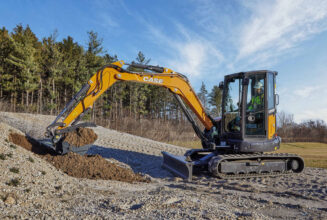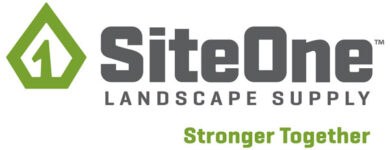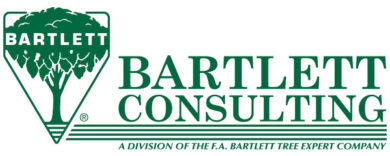Tips for Selecting Horizontal Boring Equipment
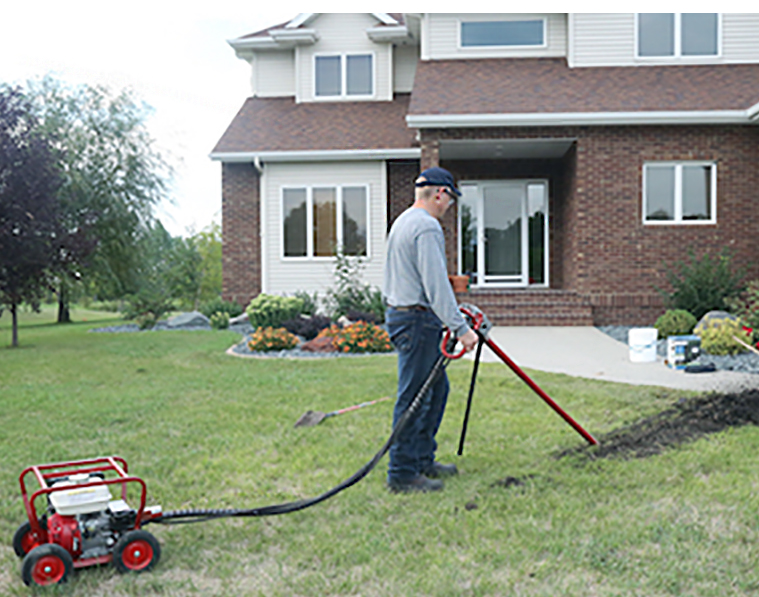
By Mike Hale
We live in a world of limited resources. Time, energy and money are all in high demand. Every job you do burns those resources. So, it only makes sense to look for equipment that’s going to make completing jobs faster, easier and less expensive. This usually comes from selecting the right equipment, with a key feature being versatility. With landscaping, versatility often comes in the form of attachments and accessories that allow contractors to do more with existing equipment.
Some earth drills offer additional attachments to expand applications beyond planting trees and installing fences. Simply adding a horizontal boring attachment to a drill offers the ability to bore under paved surfaces to install conduit or pipe to connect a water line for a sprinkler system or run wiring for outdoor lighting. These simple attachments allow contractors to replace work once performed by hand with a faster, easier and more profitable method.
4 ways to bore
Depending on the size of your landscape project, there are four main ways to bore under a paved surface. The simplest, but hardest, involves physically forcing a pipe through the ground with just muscle power and a sledgehammer.
Directional drills, by comparison, take some of the labor out of horizontal boring. These drills are best used in bigger projects that require installing pipe or cable for distances over 100 feet. This size of project and drill requires a small team to safely maneuver the drill and get the job done. Costing more than $90,000 and weighing at least 3,000 pounds, directional drills can be difficult for landscapers and DIYers to buy and maneuver.
A third option is using moles, which bore across highways and larger paved surfaces. Compared to directional drills, these machines are smaller and less expensive, but have a high cost when buying or renting. Moles usually take two or more people to operate, in addition to multiple steps and pieces, making them a hassle for a small landscaping project.
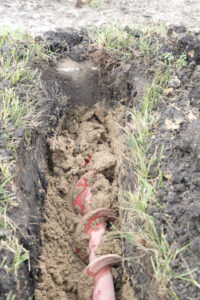 Some manufacturers offer attachments that connect to mechanical or standard hydraulic earth drills. The attachments take on smaller projects, such as boring under sidewalks and driveways, and are easy operate with one person. Besides being easier to operate than the other methods, the price tag comes in considerably less than other machines with a price of around $350. Landscapers and DIYers do not need to worry about extra equipment expenses when all they need is the drill kit and drill.
Some manufacturers offer attachments that connect to mechanical or standard hydraulic earth drills. The attachments take on smaller projects, such as boring under sidewalks and driveways, and are easy operate with one person. Besides being easier to operate than the other methods, the price tag comes in considerably less than other machines with a price of around $350. Landscapers and DIYers do not need to worry about extra equipment expenses when all they need is the drill kit and drill.
Another benefit of attachments is that they’re lightweight and easy to maneuver. That makes them ideal for use in residential areas, enabling operators to install underground sprinkler systems and run lighting in half the time and effort of using a sledgehammer to drive a pipe below the pavement.
Two attachment styles
Many mechanical and standard hydraulic drills on the market do not have the option to add a horizontal boring attachment, so it’s important to look for an earth drill with certain features to ensure it will handle both types of applications. The main component needed to transition from vertical to horizontal drilling is a flexible drive shaft. This allows the drill to reach the desired angle for horizontal boring.
Once you know your drill can handle the job, it’s time to choose the attachment. To do so, analyze the project’s purpose, size and timeline. When drilling for shorter distances, such as under a sidewalk, a dry drilling kit works well. For longer distances up to 50 feet, water speeds the process, so choose a wet boring kit.
Both attachments are lightweight and easy to use. A dry drill kit can bore under a 4-foot sidewalk in less than a minute, while a wet drill kit can bore under a 30-foot driveway in as little as 10 to 15 minutes.
Using resources carefully makes all the difference in completing boring projects efficiently and safely – all while remaining mindful of projects costs. When it comes to residential projects, the fastest, safest and cheapest method to bore under pavement may be simply adding an attachment to existing equipment.
Mike Hale is sales manager for Little Beaver Inc. He started his career in the fencing industry in 1974, and, in 1996, began working at Little Beaver Inc., a leading manufacturer of portable earth drills and accessories. He continues to offer expertise on fencing and hole digging equipment as the sales manager. If you have questions or comments, he can be reached at mikeh@littlebeaver.com or 800-227-7515.
Little Beaver has been manufacturing quality, safe and productive drilling equipment for three generations. With a full line of easy-to-operate equipment, along with a complete offering of accessories, including augers, extensions, points and blades, Little Beaver effectively serves the needs of end-users from professional contractors to rental centers. For more information visit www.littlebeaver.com.

